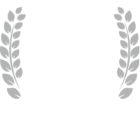Community Acquired Pneumonia:
Prediction Rules:
Fine MJ, Auble TE, Yealy DM et al. A prediction rule to identify low-risk patients with community-acquired pneumonia. N Engl J Med 1997; 336:243-50. This oft-cited prediction rule, the Pneumonia Severity Index (PSI), incorporates patient demographics, co-morbidities, vitals, labs, and chest film to identify patients likely to do well with outpatient treatment of CAP.
PMID: 8995086
Free Full Text
Lim WS, Lewis S, Macfarlane JT. Severity prediction rules in community acquired pneumonia: a validation study. Thorax 2000; 55:219-23. The CURB-65 (also validated as the CRB-65 when BUN is unavailable) is simpler to use than the PSI but is not as sensitive for predicting mortality.
PMID: 10679541
Free Full Text
Treatment:
Metlay J, Waterer G, Long A, et al. Diagnosis and treatment of adults with community acquired pneumonia. An official clinical practice guideline of the American Thoracic Society and Infectious Disease Society of America. Am J Respir Crit Care Med. 2019; 200:e45-67. Notable updates from 2007 guidelines include: recommendation against use of procalcitonin to guide initial antibacterial therapy, recommendation against use of corticosteroids, narrower indications for empiric MRSA and pseudomonas coverage, and abandoning use of HCAP category.
PMID: 31573350
Free Full Text
Dinh A, Ropers J, Duran C, et al. Discontinuing β-lactam treatment after 3 days for patients with community-acquired pneumonia in non-critical care wards (PTC): a double-blind, randomised, placebo-controlled, non-inferiority trial. Lancet. 2021; 397:1195-1203. Study most relevant to hospitalists but noteworthy for finding 3 days of antibiotics non-inferior to treating for 8 days among 310, mostly elderly, admitted patients that had achieved stability after 3 days of treatment.
PMID: 33773631
Dequin PF, Meziani F, Quenot JP, et al. Hydrocortisone in severe community-acquired pneumonia. N Engl J Med. 2023; 388:1931-41. RCT of 800 patients found a 28-day mortality of 6.2% among patients receiving an infusion of hydrocortisone 200 mg/daily for 4 to 8 days compared to 11.9% for placebo (p = .0006). A quarter of patients had obstructive lung disease. Fewer than half of patients were intubated or receiving noninvasive ventilation at enrollment. Among non-intubated patients, the hydrocortisone group had reduced subsequent need for intubation (18% vs 29%).
PMID: 36942789
Blum CA, Nigro N, Briel M, et al. Adjunct prednisone therapy for patients with community-acquired pneumonia: a multicentre, double-blind, randomised, placebo-controlled trial. Lancet 2015; 385: 1511-8. This trial randomized 785 patients with community acquired pneumonia of varying severity (only 5% in the ICU) to prednisone 50 mg x 7 days vs placebo and found a 1.4 day reduction in “time to clinical stability” (24 consecutive hours of stable vitals) and a 1-day reduction in duration of hospital stay in the steroid group. Death, ICU admission, duration of ICU admission, and duration of antibiotics did not differ.
PMID: 25608756
Free Full Text
Bartlett JG, Gorbach SL. The triple threat of aspiration pneumonia. Chest 1975 ;68:560-6. Classic review of the presentation, pathophysiology, and natural history of chemical pneumonitis, bacterial pneumonia, and airway obstruction resulting from aspiration of toxic fluids, bacteria, and inert matter respectively.
PMID: 1175415
Free Full Text
Radiographic Resolution:
Mittl RL, Schwab RJ, Duchin JS et al. Radiographic resolution of community-acquired pneumonia. Am J Respir Crit Care Med 1994;149:630-5. Prospective follow-up of both inpatients and outpatients with diagnosis of CAP is cited as a guide for when to look for endobronchial lesions in the setting of slowly clearing pneumonia. The study found age and multilobar disease were independent predictors of delayed resolution. Radiographic resolution seen in 51% at 2 weeks, 67% at 4 weeks, and 90% at 12 weeks.
PMID: 8118630
Ventilator Associated Pneumonia:
Diagnosis:
Canadian Critical Care Trials Group. A randomized trial of diagnostic techniques for ventilator-associated pneumonia. N Engl J Med. 2006; 355:2619-30.Randomized trial (N= 740) found the use of bronchoalveolar-lavage with quantitative culture vs. routine culture of endotracheal-aspiration resulted in similar clinical outcomes and antibiotic use when used for the diagnosis of ventilator-associated pneumonia. The exclusion of immunocompromised patients and those infected or colonized with MRSA or Pseudomonas, the format for empiric antibiotic use, and the criterion for a positive BAL culture are concerns raised about the applicability of the findings.
PMID: 17182987
Free Full Text
Treatment:
Kalil A, Metersky M, Klompas M, et al. Executive summary: management of adults with hospital-acquired and ventilator-associated pneumonia: 2016 clinical practice guidelines by the Infectious Diseases Society of America and the American Thoracic Society. Clin Infect Dis. 2016; 63:575-82. This revision of the 2004 guidelines eliminates the designation of healthcare-associated pneumonia and is noteworthy for recommending a 7-day course of therapy for uncomplicated cases regardless of the presence of MRSA and pseudomonas. It also recommends each hospital generate its own antibiogram and addresses the use of biomarkers, such as procalcitonin, to guide therapy.
PMID: 27521441
Free Full Text
Chastre J, Wolff M, Fagon J et al. Comparison of 8 vs. 15 days of antibiotic therapy for ventilator-associated pneumonia in adults. JAMA 2003;290:2588-98. RCT comparing 8 vs. 15 days of antibiotic in 401 immunocompetent patients with VAP (diagnosed by bronchoscopic quantitative cultures) found no difference in pulmonary infection recurrence, 28-day mortality, ventilator free-days, organ failure-free days, and length of ICU stay between groups. The 8-day group had a higher recurrence of pulmonary infections due to non-lactose fermenting gram negative rods, including Pseudomonas aeruginosa (41% vs. 25%), although the 2016 IDSA/ATS guidelines recommend limiting treatment to 7 days.
PMID: 14625336
Free Full Text
Fungal Pneumonia:
Hage CA, Carmona EM, Epelbaum O, et al. Microbiological laboratory testing in the diagnosis of fungal infections in pulmonary and critical care practice. An official American Thoracic Society clinical practice guideline. Am J Respir Crit Care Med. 2019; 200:535-550. Noteworthy addition includes an overview of using PCR in the diagnosis of invasive aspergillus infections.
PMID: 31469325
Free Full Text



